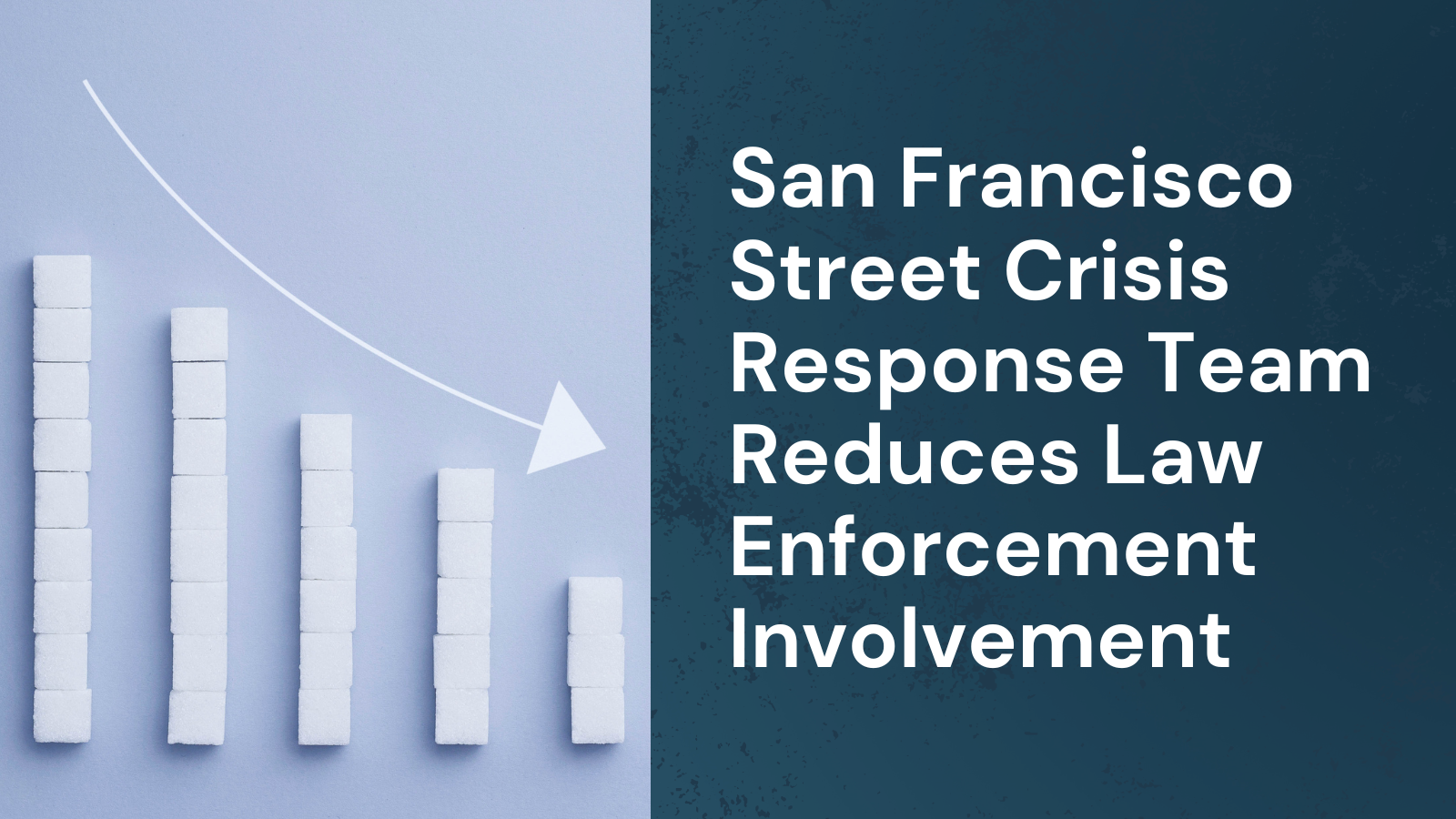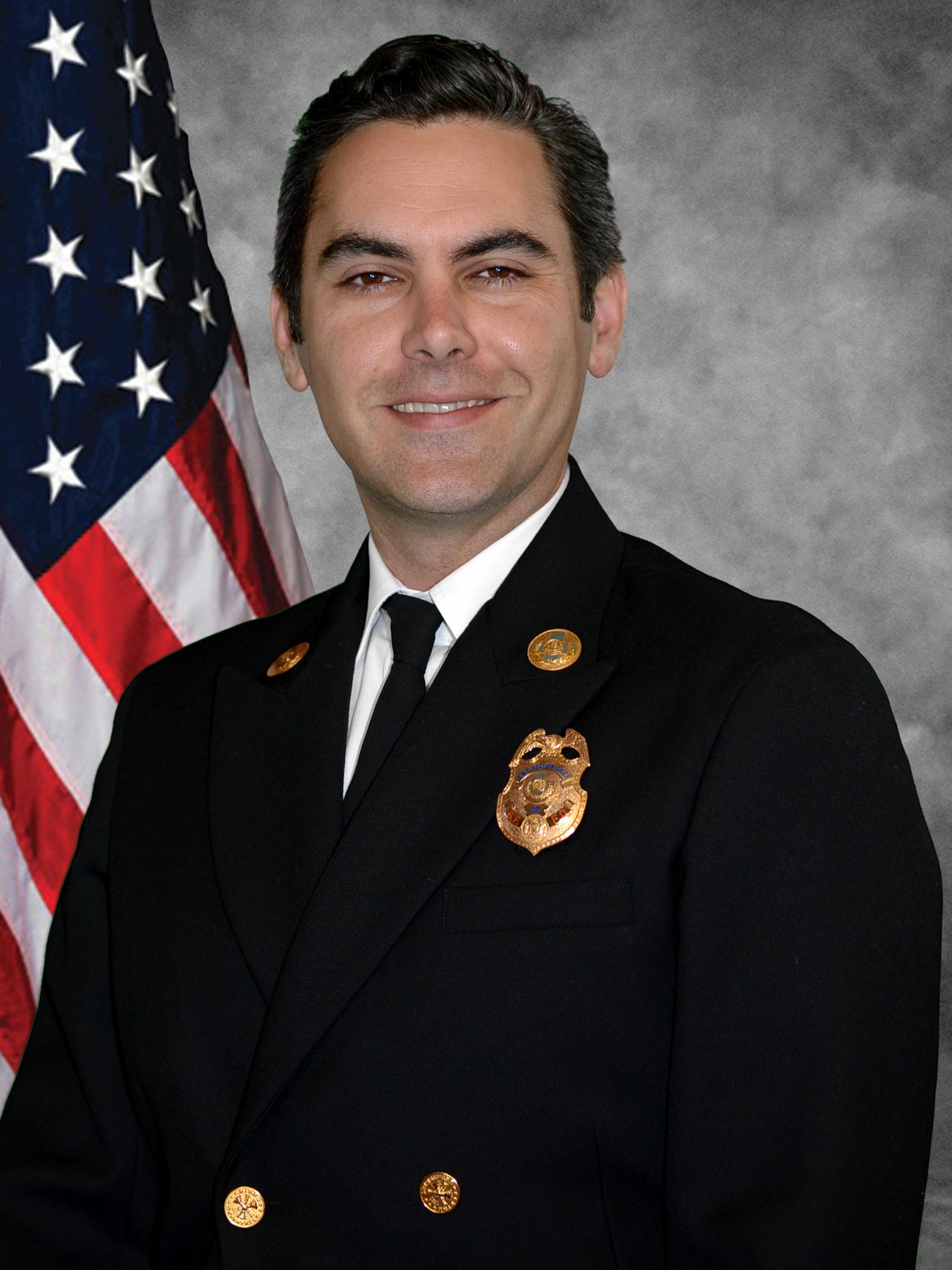An Alternative to Law Enforcement Response
The San Francisco Street Crisis Response Team (SCRT) is a collaborative effort between the San Francisco Fire Department (SFFD), Department of Public Health (DPH), Department of Emergency Management (DEM), and Department of Homelessness and Supportive Community Housing (HSH) to address behavioral health and other crises among residents. The SCRT has ten teams, each made up of a community paramedic, emergency medical technician (EMT), and peer support specialist or homeless outreach specialist, available 24/7 to respond to crisis calls all over the city.

Joe Graterol, MD, medical director, Community Paramedicine Division, SFFD; emergency medicine physician
The SCRT pilot project was launched in late 2020 in response to public desire and legislative support for an alternative to law enforcement response to people in mental health crisis. Before this, typically a police officer would respond to a 911 call for a person having a behavioral health issue, frequently resulting in the person being arrested or brought to an ED. “The nexus of the SCRT program was to find a different way to respond, especially for nonviolent, medium-to-lower-severity behavioral health crises and move people in crisis into the type of care they need,” says Joe Graterol, MD, medical director of the Community Paramedicine Division at the SFFD and an emergency medicine physician. “But, in order to do that, every part of the system needed to be reworked.” That included retraining 911 dispatchers on how to classify calls and building workflows and processes to shift behavioral health crises to this new team. As of February 2023, close to 16,000 calls had been routed to the SCRT through the 911 system. This process is continuously being improved and refined as more calls are received and more data is gathered on response and outcomes.
Trauma-Informed Response Model
The goal of the SCRT is to provide rapid, trauma-informed responses to calls for people experiencing a behavioral health crisis while reducing law enforcement encounters and unnecessary ED use. The majority of people that the SCRT serves are experiencing homelessness (64 percent), but the team also responds to crises involving housed individuals.
Before the SCRT, San Francisco law enforcement responded to about 14,000 calls related to a behavioral health crisis through the 911 system each year. Now, crisis calls are triaged to the SCRT team, centralized in the DEM, which serves as a backbone or hub for many disparate city agencies, including SFFD, DPH, and HSH. “This redesign allowed us to get away from the law enforcement model and get to a better model that is more patient centered, trauma informed, and safer for the person in crisis,” says Graterol. If an SCRT team is unable to respond to a call, the backup is sending an ambulance rather than police.
The SCRT is a community paramedicine program. Community paramedicine expands the role of paramedics beyond 911 emergency response and transport into a more proactive role in their communities. “Here in California, a community paramedic is a paramedic who has received extensive additional training in population health, mental health, substance use disorder, homelessness, and health care in general,” says Michael Mason, section chief of administration for the Community Paramedicine Division of the SFFD. “What’s special about our community paramedics is that they can engage folks outside of the context of a 911 incident, which means they can do follow-up care after a hospitalization, for instance, or targeted outreach to vulnerable populations.” Another important feature of the community paramedic model in San Francisco that makes the SCRT so successful is that—while paramedics are typically only permitted to transport to an ED—San Francisco’s community paramedics can remove a person from the 911 system and bring them to other locations. “What happens often,” says Mason, “is that the SCRT will go out on a 911 call and the community paramedic will determine the best course of action is to bring the person to a mental health drop-in center, urgent care, a shelter, or even just back to their home. The ED is not the correct answer for every person in crisis.” Because of their training in medical response, community paramedics also have the skills and background to determine when something is a true psychiatric emergency, a medical emergency (e.g., an illness or infection causing behavioral health symptoms), or something else. San Francisco community paramedic captains also have the authority to put a person on a 72-hour involuntary psychiatric hold, also known as a Section 5150 hold. This authority lends additional flexibility to responders who must determine the appropriate level of care for an individual in crisis.
Growing Success
The SCRT strives to collect demographic and other data on clients, but that is sometimes difficult based on the nature of their calls. Still, it’s clear that while the SCRT is only a couple of years old, it has already made a huge contribution to the San Francisco community. As of February 2023, the SCRT had conducted more than 9,000 engagements with people in crisis. The SCRT responds to most calls within about 17 minutes. Fifty-six percent of cases are resolved on-scene, and the person remains in the community. Other outcomes include transportation to the hospital (17 percent) or linkage and transportation to another community behavioral health or social setting (13 percent). The team also conducts follow up with clients to make sure they were able to make connections and get services they need. “One of the most fulfilling parts of this process is hearing from local community groups or citizens that they now feel much more comfortable making a 911 call because they know SCRT is available,” says Graterol.
Like what you’ve read? Sign up to receive the monthly GAINS eNews!



